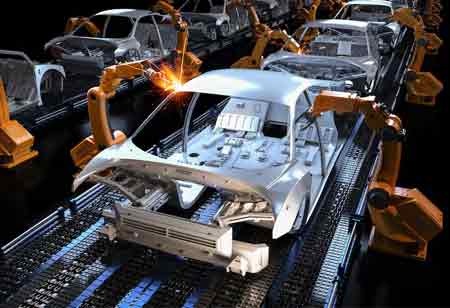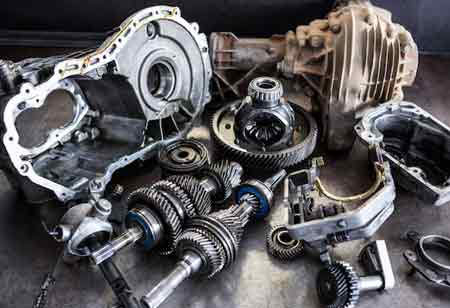Thank you for Subscribing to Auto Business Outlook Weekly Brief
Smart Manufacturing: AI's Influence on APAC Automotive Hose and Piping Production
APAC automotive hose and piping manufacturers are adopting AI to enhance efficiency, quality, and sustainability, driven by EV demand, stringent regulations, and the need for advanced manufacturing capabilities.

By
Auto Business Outlook | Thursday, September 04, 2025
Stay ahead of the industry with exclusive feature stories on the top companies, expert insights and the latest news delivered straight to your inbox. Subscribe today.

As the automotive industry undergoes dramatic changes driven by the rise of electric vehicles (EVs), stringent emission regulations, and digital manufacturing, the manufacturers of automotive hoses and piping parts in APAC are adapting swiftly. AI implementation, evolving trends, and high-performance applications are reshaping the market, while economic factors, technical challenges, and increasing demand for sustainable components continue to influence growth. AI tools streamline logistics, enabling parts suppliers to adapt quickly to fluctuating demand across OEMs and aftermarket channels.
AI's integration into this value chain amplifies the region's manufacturing strength, ensuring APAC remains competitive globally. In countries like India and Thailand, where government-backed digital manufacturing initiatives are gaining traction, SMEs in the auto parts sector are beginning to adopt AI-based platforms to improve efficiency and comply with international quality standards. As factories become smarter, there’s a shift from manual labor to skilled technical roles, requiring workforce reskilling and upskilling. AI adoption boosts productivity and attracts global OEMs seeking advanced regional manufacturing partners.
AI Trends and Applications Reshaping Production
AI has emerged as a game-changer in the automotive components sector, with manufacturers of hoses and piping parts in APAC leveraging its capabilities to enhance productivity, quality control, and supply chain resilience. AI-driven solutions are helping manufacturers transition from conventional batch manufacturing to highly efficient smart factories. In these settings, AI enables real-time monitoring of production lines, predictive maintenance, and automated quality inspection, reducing downtime and ensuring product consistency.
AI-enabled visual inspection systems use high-resolution cameras and neural networks to detect surface defects, material inconsistencies, or improper fittings in hoses and pipes. It ensures high product quality, particularly for brake systems, air conditioning, and fuel systems applications, where safety is paramount. Manufacturers employ AI for demand forecasting and inventory optimization, aligning production volumes with market needs. It helps avoid overproduction and reduces waste, which is especially vital for elastomer- and plastic-based piping materials with specific storage conditions and shelf lives.
With sustainability taking center stage, AI assists in material science innovation, helping manufacturers discover and test new eco-friendly materials. By analyzing chemical compositions and mechanical properties, AI can accelerate the development of lightweight, heat-resistant, and recyclable materials suitable for next-gen vehicles. Using AI and IoT, these models simulate the real-world behavior of hose and pipe systems under various operating conditions. Engineers use these simulations to optimize part design, reduce time to market, and enhance product performance in both combustion engine and electric vehicle environments.
Growth Drivers and Industry Impact
Several macroeconomic and industry-specific factors strongly influence the growth of APAC's automotive hoses and piping parts sector. As the world's largest automotive manufacturing region, APAC accounts for nearly half of global vehicle output, making it a critical hub for part suppliers. EVs require specialized cooling, braking, and battery management systems, each involving customized hoses and piping solutions. It has led to EV-specific product lines incorporating high-pressure and heat-resistant materials. Leading manufacturers in Japan and South Korea are pioneering these innovations, while Chinese companies are rapidly catching up with scaled production and cost advantages.
Environmental regulations and fuel efficiency mandates push OEMs to adopt lightweight and efficient hose and pipe assemblies. The shift influences manufacturers to reduce component weight without compromising durability, often through thermoplastics and composite materials. APAC firms increasingly collaborate with global R&D centers to access new technologies and improve material engineering. Urbanization and infrastructure development in Southeast Asian nations are expanding the market for commercial vehicles and two-wheelers, both requiring durable and cost-effective hose and piping systems.
From Quality Assurance to Supply Chain Volatility
The APAC automotive hoses and piping parts market faces challenges. Defects may go undetected without access to advanced quality inspection systems or standardized procedures, leading to product recalls or reputation damage. Manufacturers are increasingly implementing AI-based vision inspection and automated quality control systems. The technologies significantly reduce human error and enable real-time detection of flaws during production, improving product reliability and meeting global OEM standards. The need for AI-empowered, resilient, and agile manufacturing ecosystems is skyrocketing in APAC’s automotive component sector.
Labor shortages and skills gaps are problematic when adopting AI-based systems. Many manufacturers in developing APAC markets lack the technical workforce to effectively deploy and manage AI tools. Investing in workforce development, partnerships with educational institutions, and government-led training programs is essential to closing this gap. Fragmented regulatory standards across countries pose compliance difficulties. While Japan and South Korea have stringent standards for vehicle components, other emerging markets may lack consistent enforcement.
The discrepancy challenges manufacturers serving multiple markets. Sustainability and circular economy pressures are intensifying. Clients and regulators demand eco-friendly components, and transitioning to sustainable manufacturing involves high upfront costs. AI can support this shift by optimizing energy usage, reducing waste, enabling green material innovation, and aligning manufacturers with future regulatory and market expectations.






